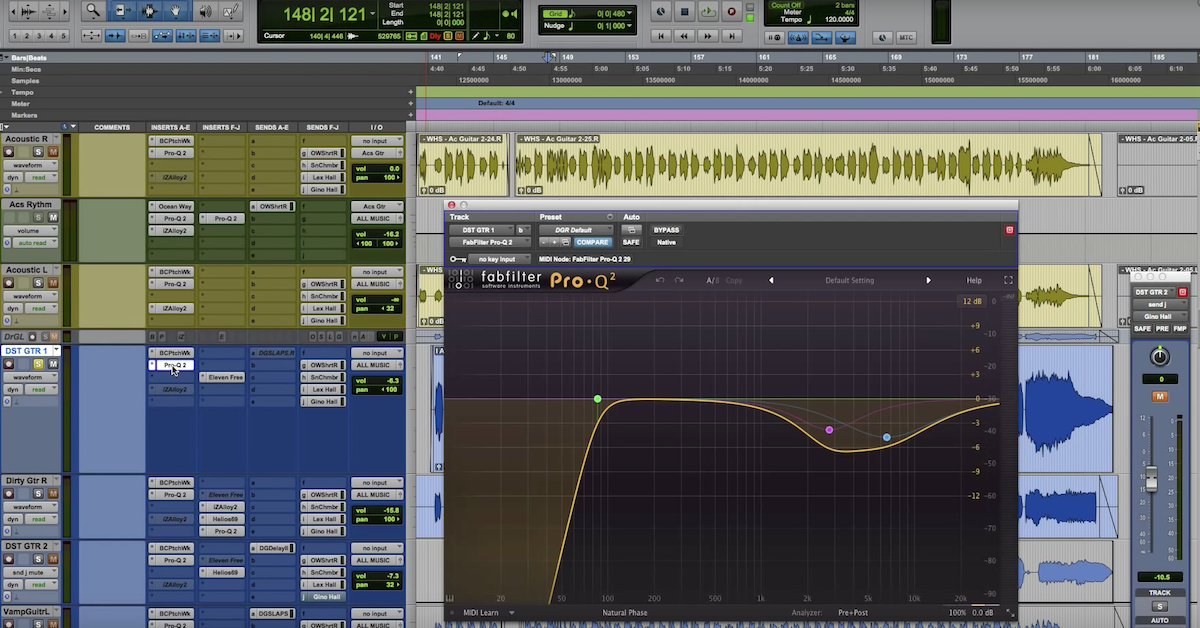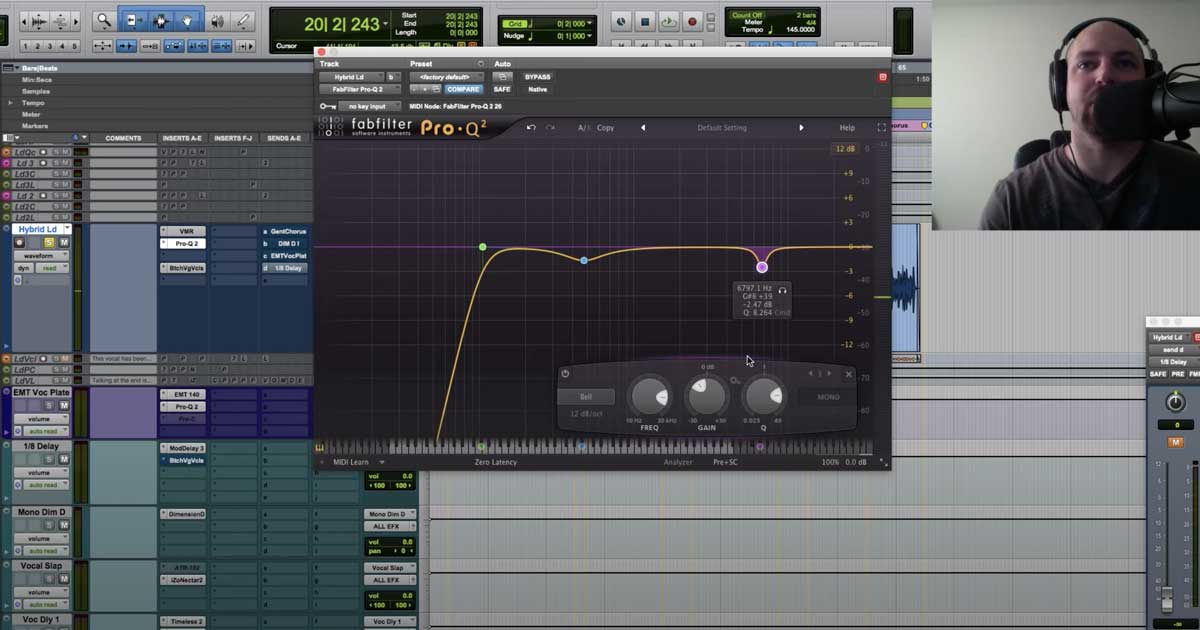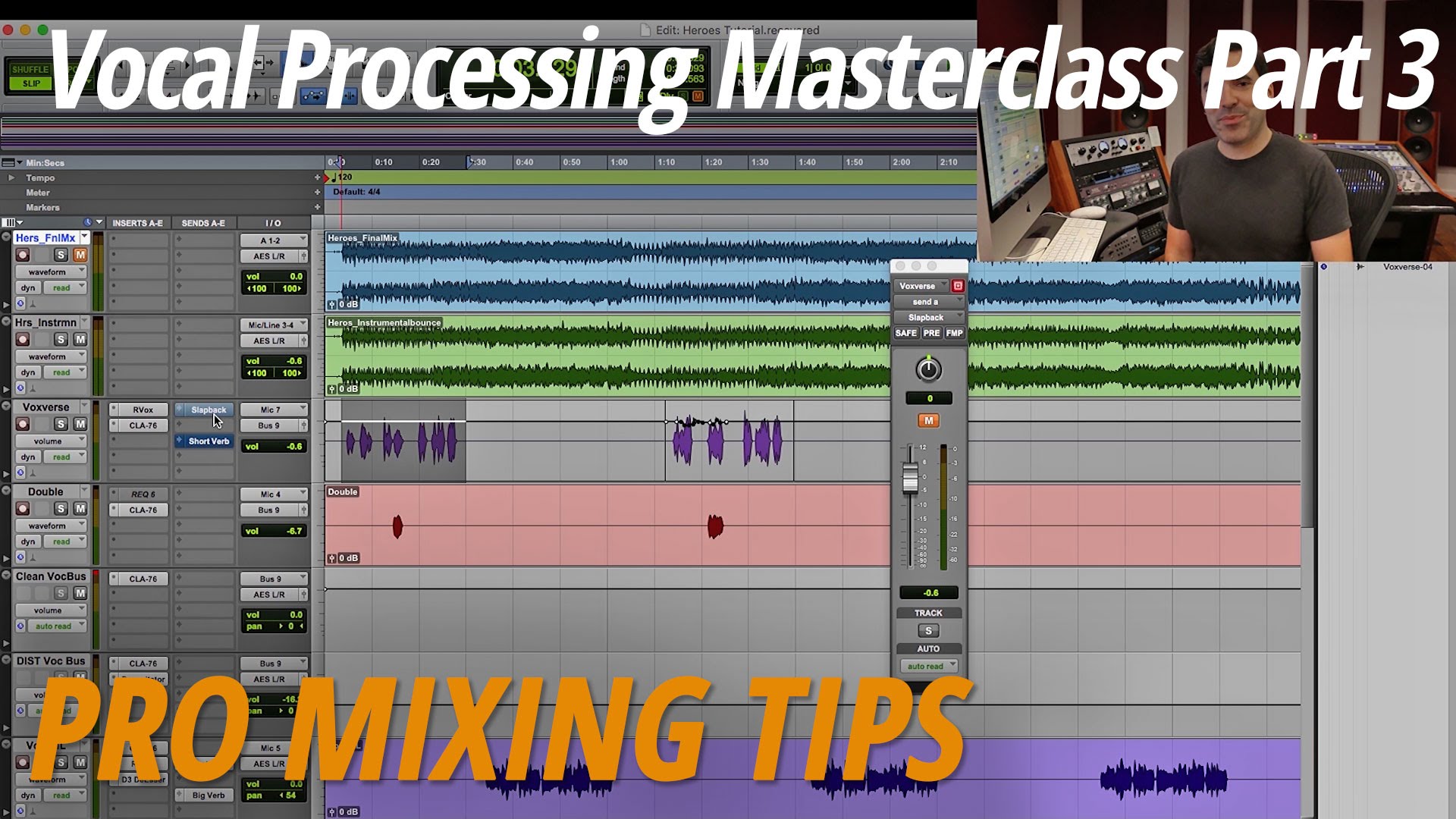Mixing with Delay: Vocal Slap Delays
Also, theproaudiofiles.com for all of the incredible content.
Today, I’m giving you a video that comes straight out of my new course, called “Mixing with Delay,” and you can by all means check out Mixing with Delay. We have the links in the description below. It’s the second course in my mixing with effects series.
First up was Mixing with Reverb, so there’s that link as well, but even if you don’t choose to go pick that up, I think this tutorial is going to be extremely valuable to you. I’ve edited about a ten minute section here using vocal slap delay.
So I’m going to just kind of lead you into that. I hope you enjoy it. Feel free to hit me with questions. David@davidglennrecording.com. Feel free to check out themixacademy.com. It’s a membership site. We mix songs every single month, I mix it, record the entire process and video tutorials, and members get the same session files that I mix, see me do it, and use it for the resume, the portfolio… There’s a forum, a Facebook group, tips and tricks videos, a coaching call where you get to ask me and my friends questions, Q&A, discussion, it’s a great time.
Themixacademy.com, mixingwithdelay.com, and I hope that you enjoy this tutorial.
Alright, time to take a look at vocals. Even more specifically, we have a hip-hop vocal in front of us for the first section here. I don’t typically use a lot of delay or reverb on a hip-hop vocal. A lot of the modern stuff tends to be dry and in your face, and this is no exception here, and actually, I can’t remember if I used much of a slap delay on this one.
I may have, but I’m going to give you a listen of what this sounds like dry, and then we’re going to go through a couple of the different slaps that I’ll use, and then we’re going to switch gears and then look at a female vocalist, and take a look at – a little more in depth at some of the vocal delays I have in my template.
Here, let’s take a listen.
[song plays]
Okay, cool. So like I said, man, that sounds great dry. I don’t feel like we’re missing out by not having a slap delay, but for educational sake, we’re going to take a look at a couple of delays that I would use on a hip-hop artist. At least to experiment and try.
In a lot of cases, this is going to be my go-to as opposed to using reverb. You can see I do have a little bit of an EMT plate here. Just a hint of it to kind of put him in the space, but it’s really really light, and not contributing much.
So let’s go ahead and look at this mono slap. This is the first one that I’ll go to. I just keep it nice and central. Then we have a vocal slap that a lot of times stays mono whenever I pull these open, but there could be a little bit of action different left to right.
I have plug-ins in here like the ATR102 from UAD, EchoBoy, Cooper Time Cube… All of those are great. Those, honestly, would be my go-to, and actually, even the UAD tape echo has been a favorite of mine lately, but we’re going to go with the stock one for now, and you’ll see I have an EQ. On my vocal slap EQ, I take out 1kHz.
What I’m going to do is I’m actually going to delete that, and we’ll get to that in a second, but the lows are gone, the highs are gone, I just want to have a little bit of a – and actually, quite a bit of the lows are gone, I’m going to pull some of that back in – and we’re just going to look at this one setting here. 80-200 milliseconds. Somewhere in that range tends to be a nice spot for the vocal slap.
I’m going to solo the vocal, and we’re going to send into it. That’s the mono slap. I’m going to hunt for that one. I’ve recently adjusted my template, and it threw all of the routing off a little bit.
So, here is the send. I’m going to solo it. Let’s take a listen. This is going to be, let’s start at 80 milliseconds. Anywhere from 80-200.
[vocals play with delay]
Okay. So I just wanted to give you guys a quick look soloed to give you an idea of the range and the different vibe between them, but really, this is best done in context to the mix, right? We’re not going to be listening to the vocal in solo.
So I’m going to put the mix in and kind of experiment with this, and let’s see what we like.
[music]
Gotta love errors. We’ll get rid of that. I kind of liked it when it was a little bit later. It’s a bit thick, it’s exaggerated right now so that we can hear it, but I kind of liked it when it was a little bit lazier, and a little bit slower. Let’s keep going down.
[song]
Okay, so for me, what I’m hearing is around 80-90, it just feels like the vocal was recorded in a closet. I’m not really digging that. Part of that is going to be because it’s still pretty stale. The stock delay, nothing to it, maybe adding a little bit of modulation will help. A little bit of character. Maybe some saturation would be cool.
But I like it feeling a little bit more like a delay, and I got that up around the 100-105 range. Let’s hear that.
[song]
So, that is not bothering me as much. I think we can even go a little higher.
Then what I want to do is come back over and showcase that 1kHz cut. So, around 800-2kHz is a sweet spot for the vocal. Picked that up from Dave Pensado. One of his videos actually showing off the FabFilter Pro-Q. I believe it was even the Pro-Q 1, but he takes and he looks and he just kind of hunts around the 800 range all the way up to 2kHz, finds the sweet spot and what that vocalist is doing against the song, and he boosts there, and then he cuts right around it on his actual lead vocal.
I’ve adopted that and use it in nearly every single mix. You can see there, I’ve got a little bit of a boost, and then I’m using the Hoser to boost around 1kHz as well. It’s about 1.3kHz on this one.
But, we’re going to do the opposite for the slap delay. What we’re going to try to accomplish is instead of boosting and pulling out more of that 1-2kHz region like we have on our lead vocal, we’re going to pull back and boost around it to try to wrap this delay around the lead vocal. So, I’m going to actually cut 1kHz a pretty healthy amount. 4, 5, 6 dB, and then I’m going to boost just gently on the opposite sides of that and see what we get.
I may not like this top one, but I tend to like the slap delay to be a little warmer, so this 300-500 seems to do well for me when I’m messing with vocal slap delays.
So let’s check this out, before and after. Here’s without the EQ.
[song]
With it.
[delay EQ added]
With it out.
[delay EQ out]
Did you hear there, it’s just a little bit too much. It’s messy. It’s getting in the way of the lead vocal.
So, vocal slaps. A good rule of thumb, go in and pull out a little bit of that 1-2kHz, or a lot in this case. I’ve got six dB. Don’t be afraid to push it.
I like to boost a little bit of the warmth. I’m using the stock delay. It has no saturation, no character, no added anything. So, it sounds good to my ear.
The only other thing I think, with cutting so much top we don’t really have this issue, but a lot of times I will instantiate a de-esser and listen for what’s going on with the vocal slap.
Let’s take a listen before and after de-essing.
[song plays]
Yeah, I actually like it better with the de-esser pushing down on the upper mid-range, so this might be counter productive having this guy here, where we were boosting. Probably even do with a little more of a cut.
So, just to taste. You may like boosting the opposite of what I just showed, but listening, EQing on the back of your vocal slap that’s just a simple right down the middle, and then let me show you how I might set this up. Whenever I pull it in to use it…
[vocal]





